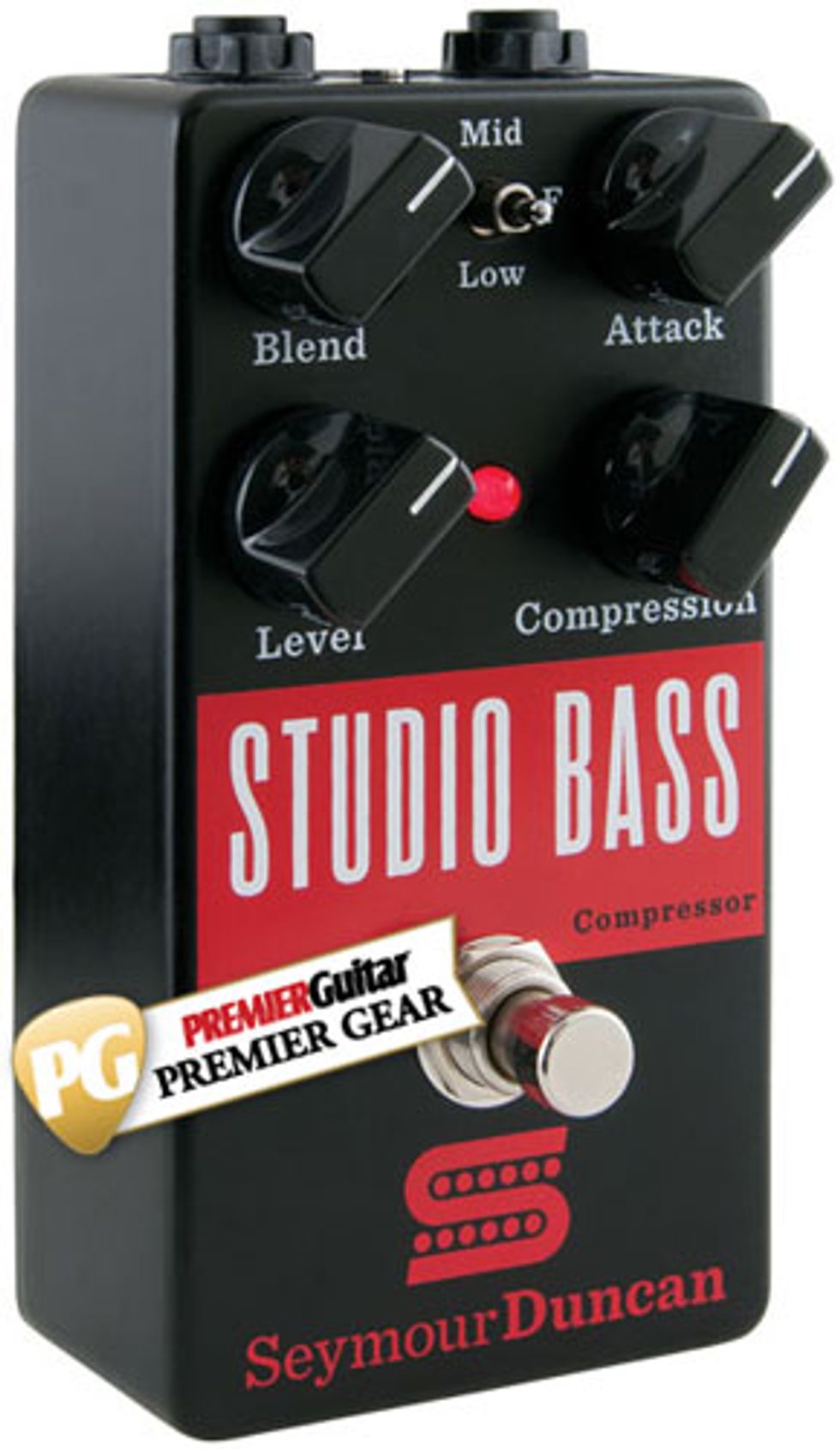An easy-to-use bass compressor that won’t put the squeeze on your wallet.
For many bassists, compression effects often fly below the radar. When it comes to carving out valuable pedalboard real estate, compressors don’t always make the cut. That’s a bit odd, given how compression is probably the most important processor of all when it’s time to track. But Seymour Duncan’s Studio Bass Compressor makes a strong case for clearing the necessary pedalboard space.
Squeeze Box
Basically, there are a four compressor types: optical, variable mu, VCA (voltage-controlled amplifier), and FET (field-effect transistor). Studio Bass is a VCA compressor, which puts it in the same universe as studio staples by the likes of Neve, SSL, and API.
Ratings
Pros:
Easy to use. Doubles as a clean boost. Effective EQ filters.
Cons:
Doesn’t provide access to all compression parameters.
Tones:
Ease of Use:
Build/Design:
Value:
Street:
$169
Seymour Duncan Studio Bass Compressor
seymourduncan.com
Studio Bass boasts a sturdy build, compact footprint, and elegant design. Top-mounted I/O and power jacks leave elbow room for neighboring pedals, and the flared black knobs are easy to access and read. The pedal’s pots, switches, and jacks are all high-quality, and the package even comes with thin adhesive-foam strips for pedalboard mounting.
While some bass-compressor stompboxes provide maximum control via such parameters as ratio, slope, and threshold, Duncan opts for a simpler approach. Blend controls the wet/dry mix. Level sets the master output. Attack governs the compression speed, and compression controls the amount of squeeze. Additionally, a 3-position switch applies preset EQ curves to the bass’s dry signal: mid position adds a slight midrange boost, F is flat, and low provides an extra bump on the bottom.
Fun Factor
I auditioned the Studio Bass between a Fender Jazz and a CEntrance AxePort Pro interface, recording the results into my DAW, Audacity. It was easy to get a wide range of compression effects by manipulating the attack and compression controls, from smooth, slow, and subtle to quick and squishy. The pedal tamed dynamic spikes while slapping, brought greater articulation to fingerstyle plucking, and lent a pleasing midrange punch to pickstyle playing. Dialing in a clean signal and working the blend knob harnessed the compressor’s polishing power while maintaining the desired degree of punch. And if you dial compression all the way down, the Studio Bass works as a slick boost pedal, governed by the level knob and colored by the 3-way EQ toggle.
The Verdict
The Studio Bass Compressor performs its namesake process at a reasonable price while adding such useful functions as EQ presets and a potent clean boost. Players who might balk at more complicated compressor pedals will probably find the Studio Bass’s to be simple and fun. Whether you’re new to compression or have used it for ages, consider kicking it with Studio Bass.
Watch the Review Demo:



